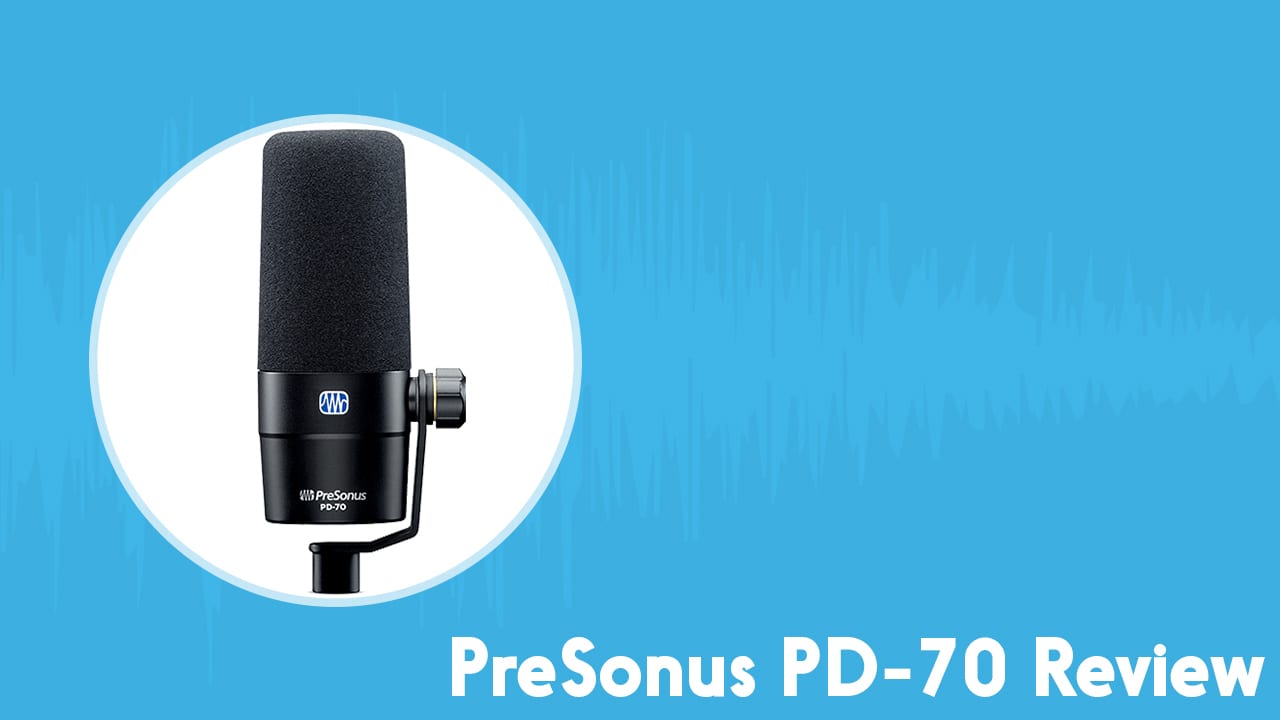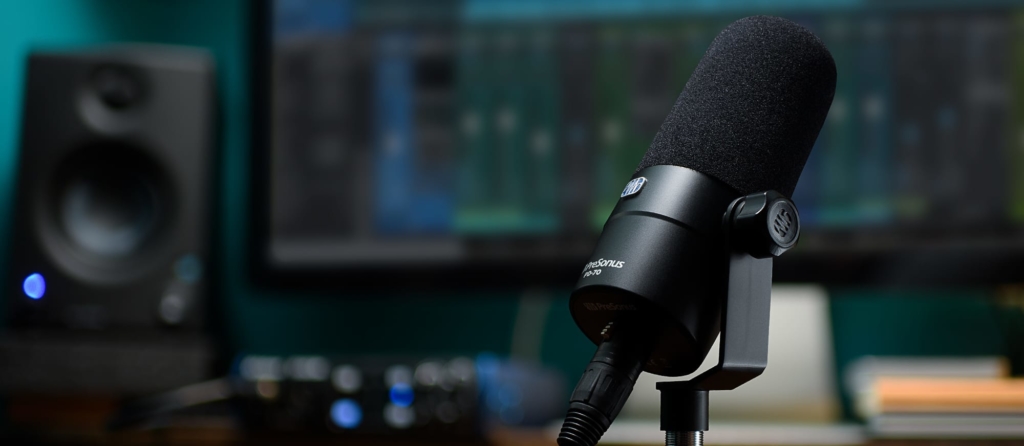PreSonus PD70 Review: The Joys of A Large Diaphragm

As a boy, I couldn’t wait to get my hands on a real microphone. Not a brand, mind you, but the idea of the rock and roll microphone that, later in life, I now associate with a brand. When I finally did, I loved the warmth that the microphone lent my young voice, giving it more body when I sang and spoke, especially when I got close to the microphone.
As my body grew, my voice grew more resonant. And I found that the standard ball microphone couldn’t capture my natural vocal tone anymore. I could use the proximity trick to add more bass to my voice, but it was artificial and fell short of my natural tone.
Years later, in college, Dan Wood introduced me to large diaphragm microphones, and I found the sound that I was missing. And it was all related to voice placement.

It’s Not About That Bass! (But It Is! (But it Isn’t!))
Though it never hurts to use one, a large dynamic microphone isn’t necessary for everyone. But the register at which you speak or sing isn’t the only determining factor. It depends heavily on your vocal characteristics and vocal placement.
There are a huge number of factors in play when it comes to your vocal tone, and each voice has a unique flavor. Body frame, regional dialect, anxiety, placement in the chest, throat, head, and nose, mouth, shape, and articulation all change the characteristics of a person’s natural voice. Here’s a deeper dive on mic technique, for some future reading material.
Vocalists and actors are trained to use their chest voice more, and over the years will often develop what is described as a “fuller voice.” These chest tones are often not captured by smaller diaphragm microphones, which don’t have the same sensitivity. It’s not about treble and bass. Male or female. It’s about low-frequency tones that resonate in the chest and whether that texture is associated with your voice.
The PreSonus PD70 Dynamic Broadcast Microphone
So how does the PreSonus PD70 stack up? For starters, at around $130, it’s more than half the price of its standard studio equivalent. Cost was a huge factor in why I waited so long to purchase a large-diaphragm dynamic. The mic has a good solid feel, deceptively heavy coming out of the box, so it’s not just a shell with cheap components. And the sound?
The PD70 reproduces the voice nicely while capturing the warmth of the chest voice that gives the voice some of its pleasant characteristics. It’s low noise, and has excellent off-sides rejection, meaning the microphone captures more of your voice and less of the room you’re recording in.
What You’ll Need to Run the PreSonus PD70
It’s an XLR mic so you’ll need something to plug it into. Typically this could be a digital recorder or a USB audio interface (like the PreSonus AudioBox USB 96!). If you don’t own (or want) additional gear, check out the PreSonus Revelator Dynamic, which is similar to the PD70, but in USB form.
You’ll also need to support the mic on a boom arm or mic stand. You may find bundle deals with a boom arm included, but if not, it won’t cost the earth to pick one up.
Buy the PreSonus PD70, brand new, on Amazon – FYI, our link here is an affiliate and we may earn a commission should you choose to purchase through it – at no extra cost to yourself!
That Broadcast Sound!
Podcasting, like all crafts, is influenced by the disciplines that lent to their rise. With its roots in talk radio, podcasters often try to capture that warm resonant broadcast sound. The core of that broadcast sound is the use of large dynamic microphones and a lot (A LOT!) of compression. Podcasters have become more nuanced with compression, but the use of large-diaphragm dynamic microphones remains a constant.
With a tame 4:1 compression ratio added to the PD70, the warm chest tones come forward, and even without further noise processing, the microphone already gets a clean responsive broadcast sound effortlessly.

The PreSonus PD70: An Oustanding Mic at a Stellar Price!
If the cost investment was holding you back from favoring a large-diaphragm dynamic microphone, then this is the model you’ve been waiting for. The Presonus PD70 is a beautiful mic with great frequency response and sensitivity, capturing the chest tones and that broadcast sound with low noise and terrific clarity.
If you’re still looking to shop around, though, then check out our reviews of the Stellar X2, Revelator Dynamic, and PreSonus PX-1 mics!
Need More Help?
Choosing your mic is just one small piece in the wider podcasting puzzle. For courses on everything from editing and interviewing, to monetisation and promotion – along with weekly live Q&A sessions – be sure to join us in Podcraft Academy.
